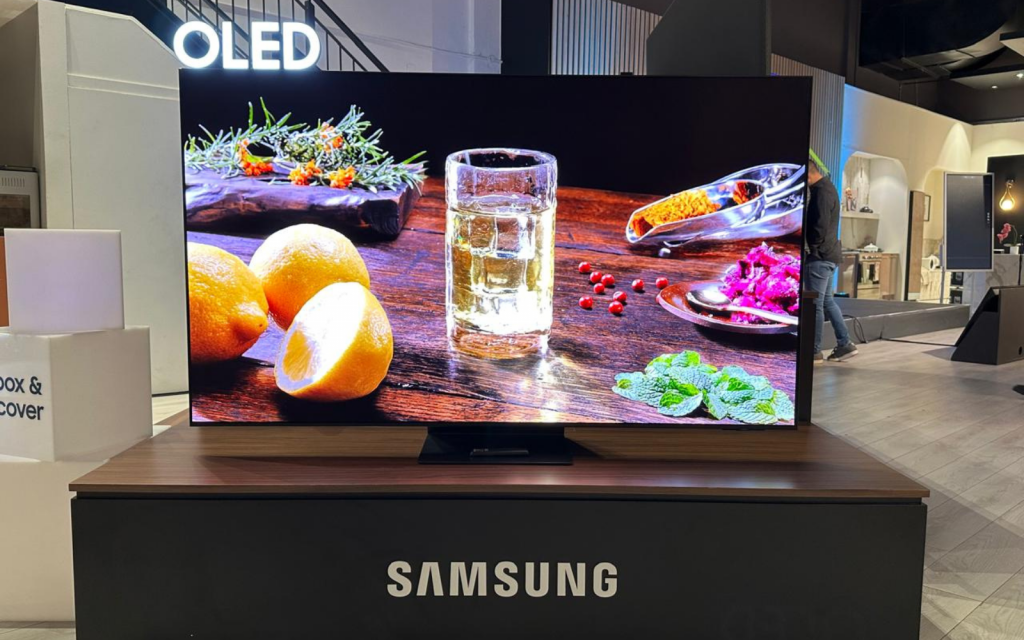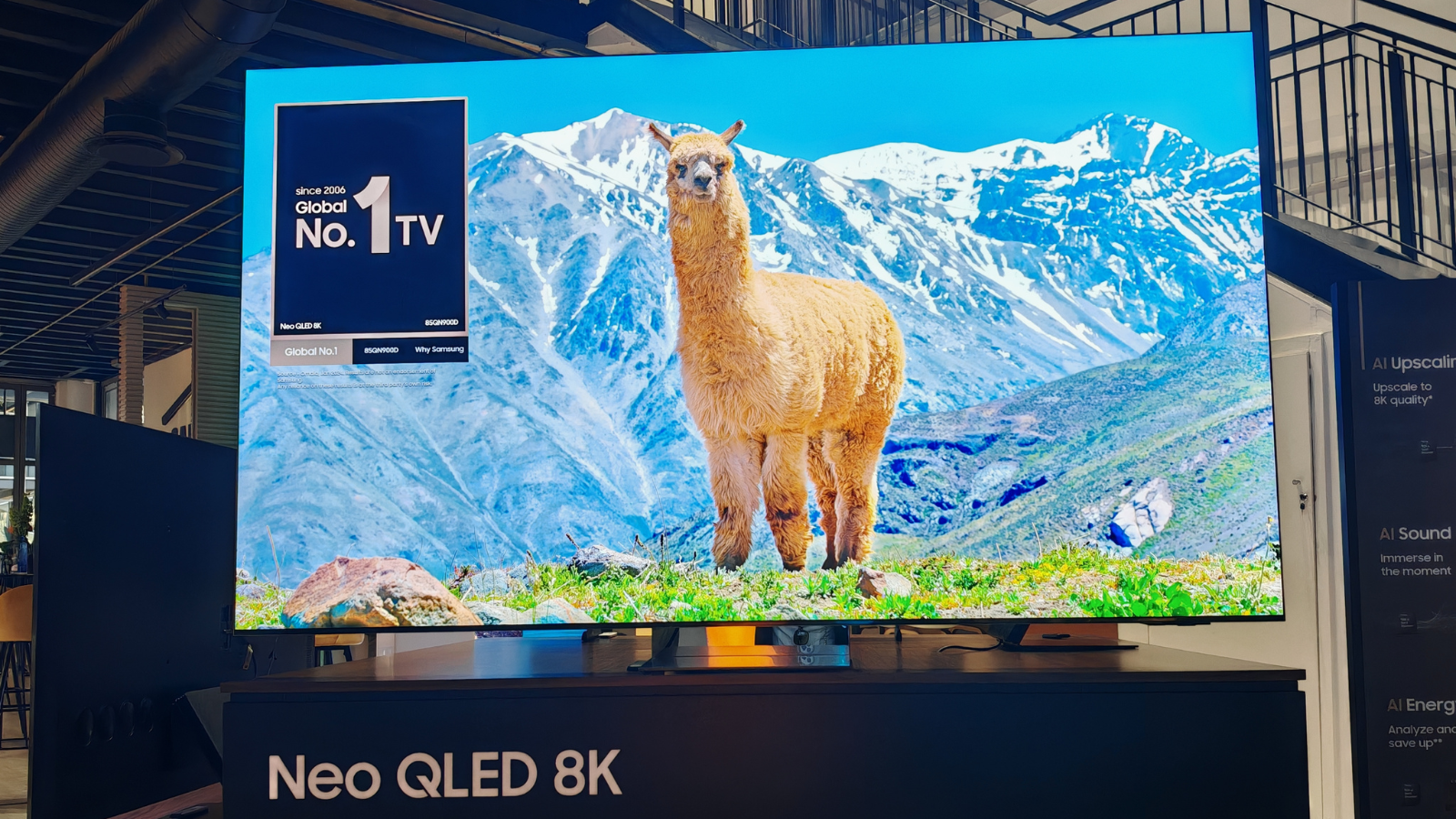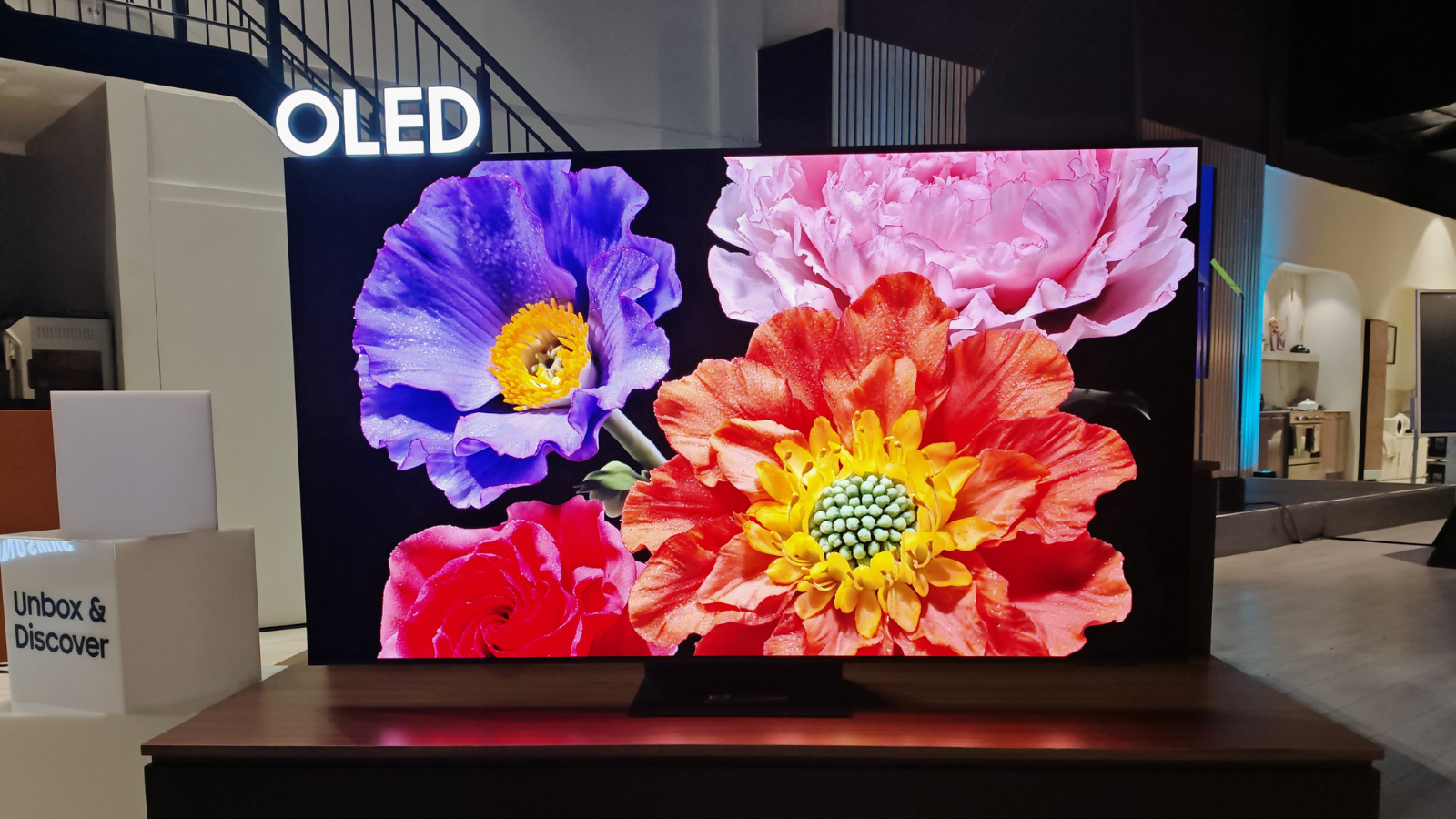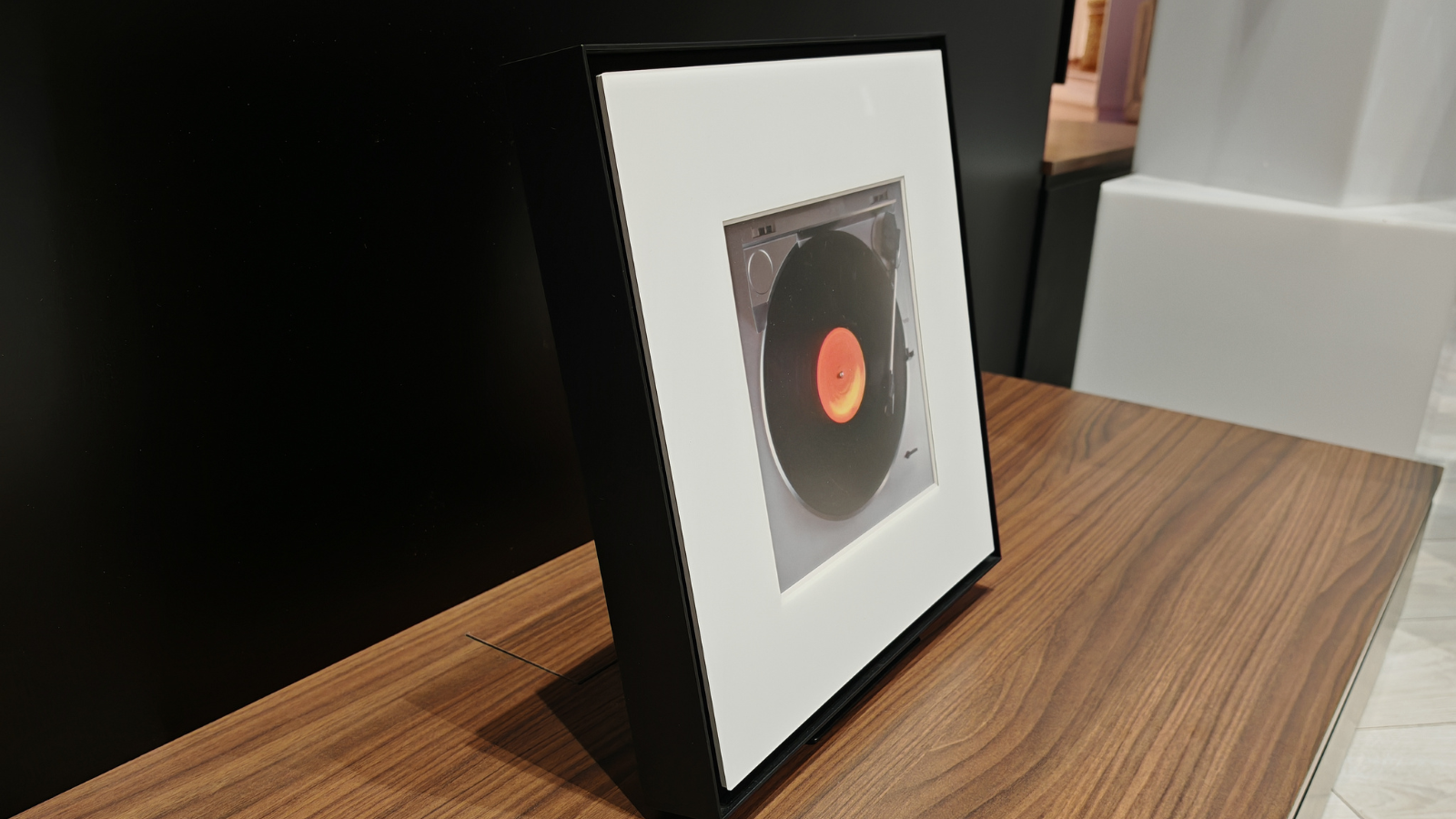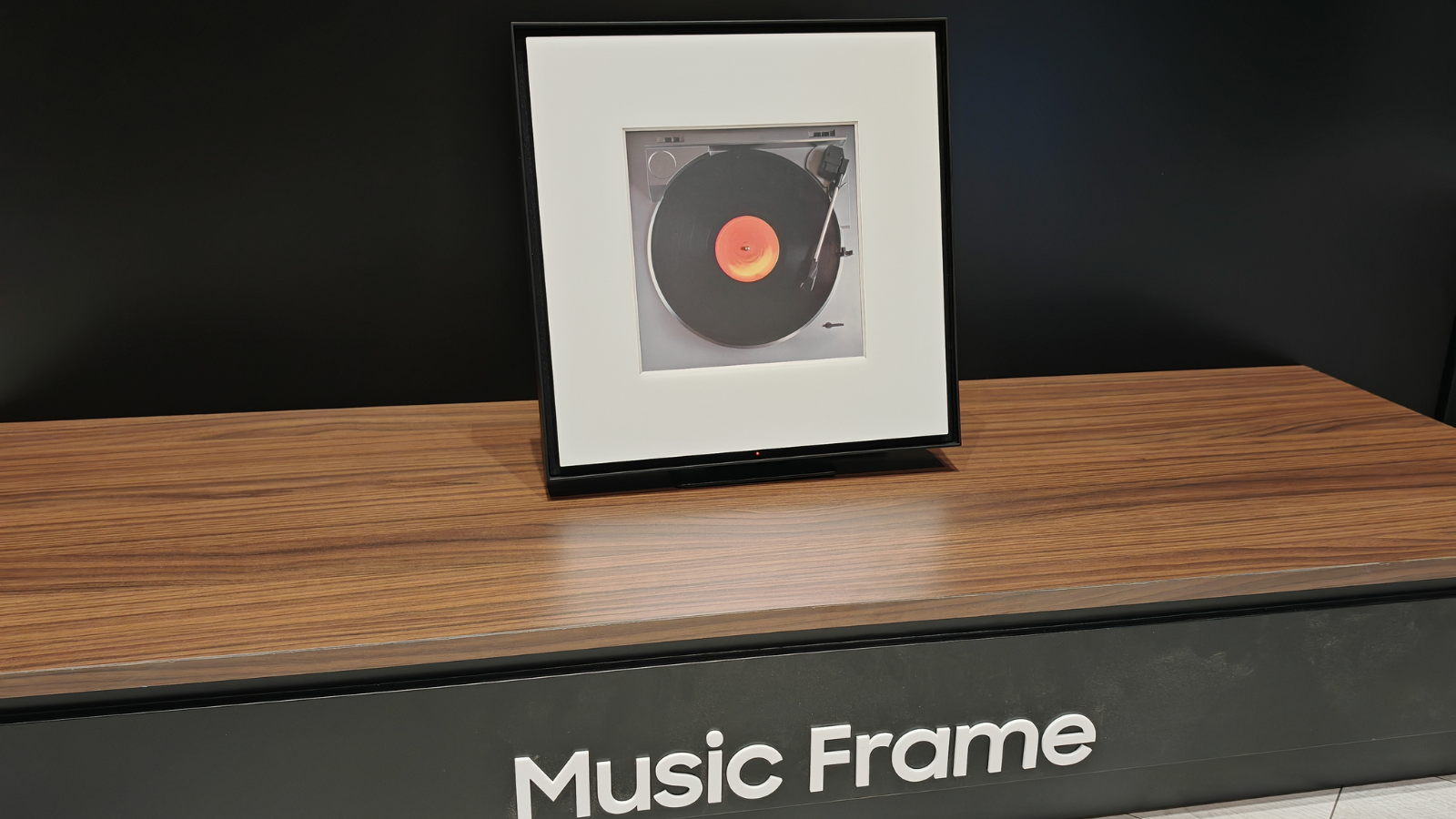Ladies and gentlemen, a new era has dawned. At Samsung South Africa’s Unbox & Discover event in Johannesburg this afternoon, the South Korean outfit took the wrapper off some shiny AI-touting TVs that you can already pre-order on Samsung South Africa’s website (if your wallet can handle them).
Wondering what Samsung is so riled up about? Upscaling. You know, giving a bump to the visual fidelity of your content, even if there isn’t much to work with, quality-wise. Specifically, though, it’s the NQ8 AI Gen 3 and Gen 2 processors handling all the upscaling that’s got Samsung all hot and bothered. Or it might be all the money these bad boys are about to make them. Probably both.
Neo QLED 8K dreams
Headlining the event is the Neo QLED 8K QN900D and its little brother, the QN800D, the first of which can be bought in 75in and 85in sizes, while the weaker can only be picked up as a 65in model.
The QN900D has the biggest numbers, so it makes sense that it should be the one to bear that NQ8 AI Gen3 processor we mentioned earlier. Described as the company’s “most powerful processor to date”, it carries a neural processing unit (NPU) that gives the TV its AI powers.
Those consist of features Samsung call 8K AI Upscaling Pro and AI Motion Enhancer Pro, powered by 512 AI neural networks that all work in tandem to elevate the quality of whatever content you’re watching. Edges are sharper, while footballs and Jason Statham movies all look and feel smoother. And gaming? It’ll hit 240Hz with no difficulties – far exceeding the PS5’s 120Hz refresh rate limit.
Sounding like your worst idea of an MCU movie trying to sound sciencey, the Neo QLED 8K QN900D features Quantum Matrix Technology Pro and Neo Quantum HDR 8K Pro that the company believes can take SDR content and turn it into “HDR-like quality with brighter highlights, more vibrant colours and clearer details.”
The less-capable (and less expensive) QN800D doesn’t do a whole lot different from the QN900D. It misses out on the ‘Pro’ features but still sports Neo Quantum HDR 8K tech and a slightly simpler NQ8 AI Gen 2 processor. It’s not as speedy, and it’ll “only” hit 120Hz, but it’ll get the job done all the same. The job being to upscale your TV’s content to 8K no matter what.
Now for the bit you don’t want to hear — pricing. Those with deep enough pockets can grab a 75in QN900D for R130,000, or spring for the 85in model going for R150,000. If your bank balance doesn’t quite stretch the six figures, the QN800D retails for R70,000.
Stepping into the OLED ring
Samsung’s claim to fame for this year’s flagship OLED, the S95D, is what it calls ‘OLED Glare Free’ technology which “preserves colour accuracy and reduces reflections while maintaining image sharpness to ensure an immersive viewing experience, even in daylight.” We’ve since only been able to find the S95D on samsung.co./za, though we’re sure the other two, the S80D and S90D, will be along shortly.
The NQ4 AI Gen 2 processor inside this year’s OLED TVs offers similar AI upscaling performance to that of the Neo QLED range. The S95D comes equipped with Samsung’s ‘144Hz Motion Xclerator’, ‘OLED HDR Pro’ and a whole bunch of AI features that help objects stand out from their backgrounds, offers increased brightness, and achieves the best colour reproduction possible.
And it can back it up on that last bit. Samsung’s 2024 OLED range is Pantone Validated. Samsung’s claiming sound has seen a big upgrade, too, with Dolby Atmos support and Object Tracking Sound+ — the company’s way of slipping in another AI mention. By analyzing each scene with AI, OTS+ is able to recreate realistic 3D audio by targeting specific speakers in the TV.
The S95D OLED starts at R65,000 and will take up 65in of your wall, while the 77in size requires a cool R100,000 before it’ll come home with you.
They put music in a frame?
The quirky uncle of the Unbox & Discover event was the Music Frame — itself a close relative of ‘The Frame‘ TV that turned out to be so popular Samsung couldn’t resist turning it into a Bluetooth speaker. Or, if you’ve got the dough for those anti-glare OLEDs or 8K Neo QLEDs, these can act as surround sound speakers if you can shell out for two of them.
It’s got space for a customisable 8in print on its front and interchangeable bezels (in the US, at least) that hide the speaker’s tweeters, mid-range drivers and subwoofers which will also pump out Dolby Atmos audio. It can be hung up, or simply left to stand on a side table if you decide to not pair it up with a 2024 Samsung TV using Q-Symphony.
It’s the cheapest of the products unveiled at Samsung’s Unbox & Discover event, coming in at R6,000 per speaker on Samsung South Africa’s website. But really, what good is one speaker?

